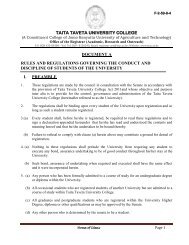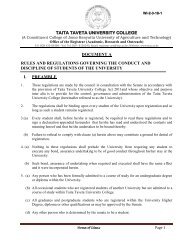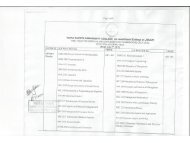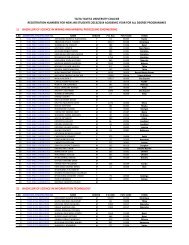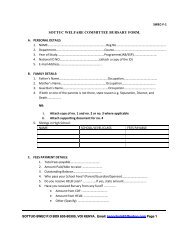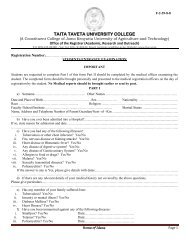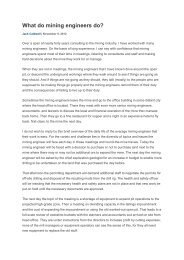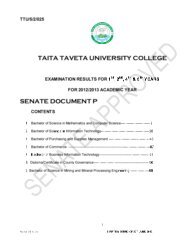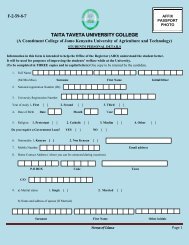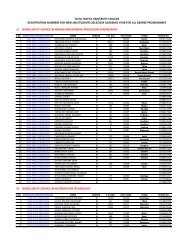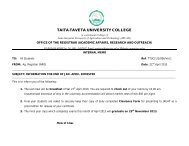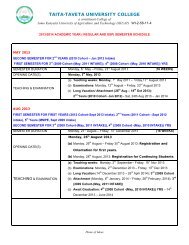Conference Book of Abstracts - Taita Taveta University College
Conference Book of Abstracts - Taita Taveta University College
Conference Book of Abstracts - Taita Taveta University College
- No tags were found...
Create successful ePaper yourself
Turn your PDF publications into a flip-book with our unique Google optimized e-Paper software.
have high micronutrient content and several health benefits that would contribute to reduction <strong>of</strong>lifestyle and diet related diseases like obesity, cancer and diabetes. They possess severalagronomic advantages and Climate resilience characteristics. Despite the advantages the studyfound that optimal production is curtailed by several constraints including: negative mindsets,inadequate knowledge sharing, inadequate quality seed and technical information. Strategies inRepositioning these Underutilized crops globally that were developed included: identification <strong>of</strong>species with nutrition and economic potential; advocacy and promotion; recipe and productdevelopment, development <strong>of</strong> dissemination and knowledge sharing materials, development <strong>of</strong>seed supply systems, capacity building and in-situ and ex-situ conservation <strong>of</strong> the priorityspecies. Commercialization, value Addition and product development should be enforced andupscaled for poverty alleviation and sustainable development in Africa. Indigenous vegetablesand fruits are high pr<strong>of</strong>ile commodities with nutritional and unrivalled health benefits, they havea great potential to contribute to the food basket to feed the world in the 21 st century.Key words: Agro-biodiversity, nutrition, health benefits, repositioning, food basket andcommercializationBiodiversity Informatics: an emerging science, promoting conservationDaniel Masiga,Molecular Biology and Bioinformatics Unit, International Centre <strong>of</strong> Insect Physiology and Ecology, icipedmasiga@icipe.orgOver several decades now, there has been recognition that there are not enough taxonomists torecognize, identify and name new species and understand their taxonomic relationships. Thistaxonomic impediment has limited our ability to adequately study biodiversity, and thereforedevelop conservation plans. Although parataxonomists can be trained to make initial speciesidentifications, the lack <strong>of</strong> experts limits the ability to recognize exotic pests when firstencountered, or vectors <strong>of</strong> plant and animal disease pathogens and other species that influencethe wellbeing <strong>of</strong> ecosystems. In recent years, great technological advances, particularly ingenomics and computer technology have engendered generation <strong>of</strong> new approaches to describeand share biological information. A number <strong>of</strong> initiatives have been developed to catalyze theseadvances to enable access <strong>of</strong> biodiversity data over the Internet. With this, a new science knownas Biodiversity Informatics has emerged. Among the major initiatives are the GlobalBiodiversity Information Facility (GBIF: http://www.gbif.org), which was established bygovernments in 2001 to encourage free and open access to biodiversity data, via the Internet, andthe Encyclopedia <strong>of</strong> Life (EOL; http://www.eol.org). The new science <strong>of</strong> Biodiversity Informaticshas emerged to generate frameworks and approaches that can accommodate much morebiological information than bioinformatics, which is based on gathering, collating, displayingand analyzing molecular data. Biodiversity Informatics deals with morphological features,



